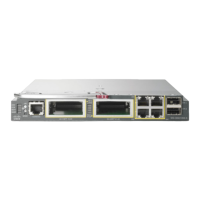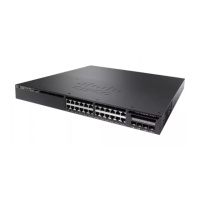Contents
xxxv
Cisco Catalyst Blade Switch 3120 for HP Software Configuration Guide
OL-12247-01
Configuring IP Multicast Routing 44-10
Default Multicast Routing Configuration 44-10
Multicast Routing Configuration Guidelines 44-11
PIMv1 and PIMv2 Interoperability 44-11
Auto-RP and BSR Configuration Guidelines 44-12
Configuring Basic Multicast Routing 44-12
Configuring PIM Stub Routing 44-14
PIM Stub Routing Configuration Guidelines 44-14
Enabling PIM Stub Routing 44-15
Configuring a Rendezvous Point 44-16
Manually Assigning an RP to Multicast Groups 44-16
Configuring Auto-RP 44-18
Configuring PIMv2 BSR 44-22
Using Auto-RP and a BSR 44-26
Monitoring the RP Mapping Information 44-27
Troubleshooting PIMv1 and PIMv2 Interoperability Problems 44-27
Configuring Advanced PIM Features 44-27
Understanding PIM Shared Tree and Source Tree 44-27
Delaying the Use of PIM Shortest-Path Tree 44-29
Modifying the PIM Router-Query Message Interval 44-30
Configuring Optional IGMP Features 44-30
Default IGMP Configuration 44-31
Configuring the Switch as a Member of a Group 44-31
Controlling Access to IP Multicast Groups 44-32
Changing the IGMP Version 44-33
Modifying the IGMP Host-Query Message Interval 44-33
Changing the IGMP Query Timeout for IGMPv2 44-34
Changing the Maximum Query Response Time for IGMPv2 44-35
Configuring the Switch as a Statically Connected Member 44-35
Configuring Optional Multicast Routing Features 44-36
Enabling CGMP Server Support 44-36
Configuring sdr Listener Support 44-37
Enabling sdr Listener Support 44-38
Limiting How Long an sdr Cache Entry Exists 44-38
Configuring an IP Multicast Boundary 44-39
Configuring Basic DVMRP Interoperability Features 44-40
Configuring DVMRP Interoperability 44-41
Configuring a DVMRP Tunnel 44-43

